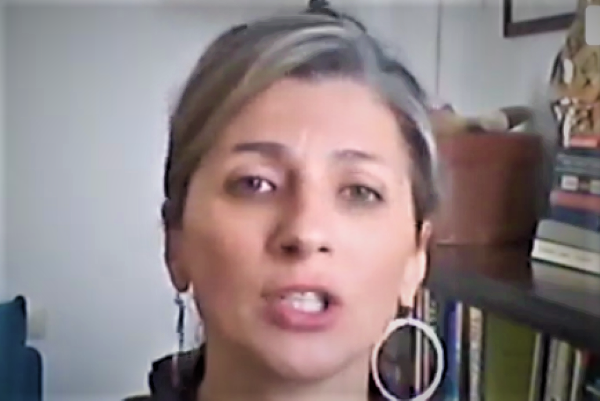Despite the letter’s alleged research flaws, the missive spread like wildfire on social media.
By Corey Walker, The Algemeiner
The United Nations’ special rapporteur on the human rights situation in the Palestinian territories has circulated a heavily disputed and unreliable claim from a medical journal that 186,000 people have been killed in Gaza as a result of the ongoing Israel-Hamas war.
“If one includes both direct & indirect deaths from Israel’s assault, the death toll in Gaza goes up to 186,000 people, according to the medical journal [The Lancet]. That’s 1 in every 12 Gaza inhabitants killed in the last 9 months of genocide,” Francesca Albanese posted on X/Twitter.
If one includes both direct & indirect deaths from Israel's assault, the death toll in Gaza goes up to 186,000 people, according to the medical journal @TheLancet. That's 1 in every 12 Gaza inhabitants killed in the last 9 months of genocide. https://t.co/pOvhnyKMPW
— Francesca Albanese, UN Special Rapporteur oPt (@FranceskAlbs) July 8, 2024
Last week, The Lancet, a prominent medical journal, published an article titled, “Counting the Dead in Gaza: Difficult but Essential.” In a one-page correspondence letter, the authors argue that as many as 186,000 Palestinians may have perished in Gaza, amounting to 8 percent of the enclave’s population. The correspondence letter, which was not a peer-reviewed academic study, arrived at this number by taking the Hamas-supplied casualty figure of 37,396 and multiplying it by five, citing previous research that indicates there are usually at least four indirect deaths in combat for every direct death.
Critics shredded the calculation. Salo Aizenberg, a board member with Honest Reporting, lambasted the “fraudulent letter” in a thread on X/Twitter. Aizenberg pointed out that the health authorities in Gaza controlled by Hamas, the terrorist group that launched the ongoing war in Gaza by slaughtering over 1,200 people in southern Israel on Oct. 7, already includes “indirect deaths” in their casualty figures, meaning that the letter’s authors “double count deaths with multiplier.” These supposed “indirect death” numbers, which typically consider casualties by result of famine, disease, and lack of medical attention, have already been included in United Nations reports.
The letter inaccurately stated that the casualty figures produced by Hamas-controlled authorities are “accepted as accurate by Israeli intelligence services.” Israel has heavily disputed the reported causality figures and accused Hamas of inflating the death toll in Gaza for the sake of tarnishing the Jewish state’s international reputation. Experts have cast doubt on the reliability of casualty figures coming out of Gaza for overcounting civilian deaths and not distinguishing between civilians and combatants.
The authors of the study state that Gaza authorities have had to “augment” their casualty numbers using figures from third parties, such as “reliable media sources and first responders.” Aizenberg questioned this claim, stating that reputable international media is not on the ground in much of Gaza and Hamas has not presented evidence that first responders are counting bodies in the war-torn enclave. The authors also assert that 35 percent of Gaza’s infrastructure has been “destroyed” as a result of the war while simultaneously citing a UN report that claims 12 percent of the enclave has been destroyed.
Despite the letter’s alleged research flaws, the missive spread like wildfire on social media.
Albanese has an extensive history of using her role at the UN to denigrate Israel and seemingly rationalize Hamas’ attacks on the Jewish state. In the months following Hamas’ brutal assault on the Jewish state, Albanese has accused Israel of enacting a “genocide” against the Palestinian people in revenge for the Oct. 7 attacks.
The United Nations has recently launched a probe against Albanese over allegedly accepting a trip to Australia funded by pro-Hamas organizations. Albanese has also celebrated the anti-Israel protesters rampaging across US college campuses, saying they represent a “revolution” and that they give her “hope.”
